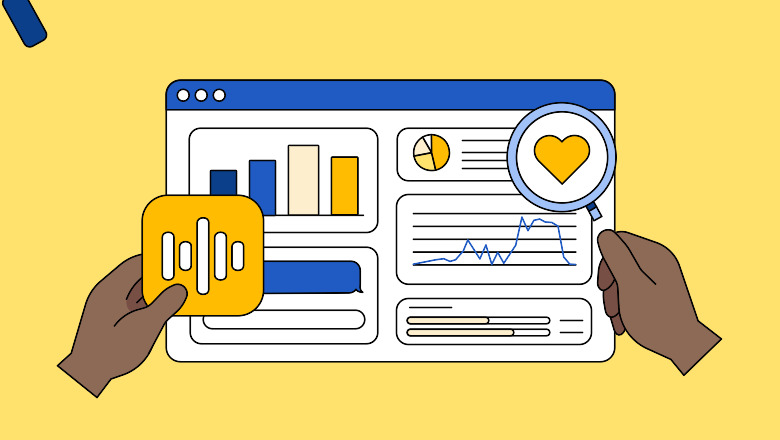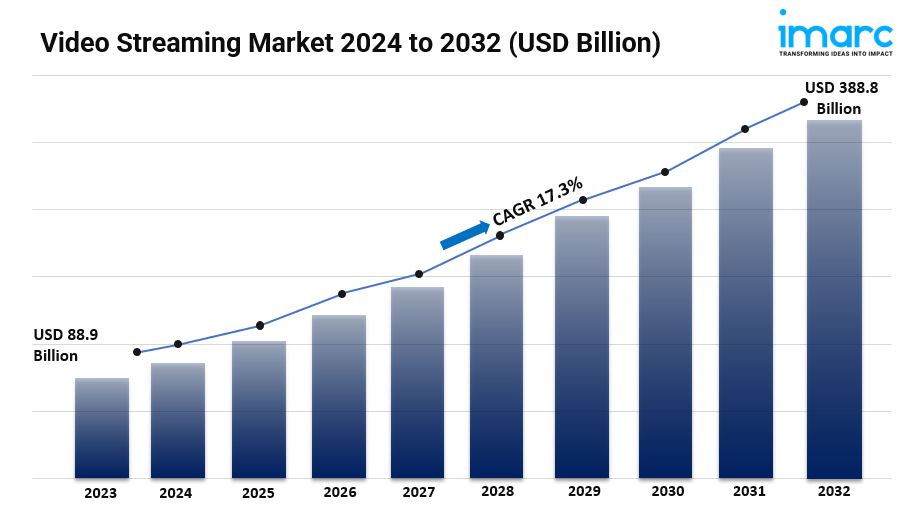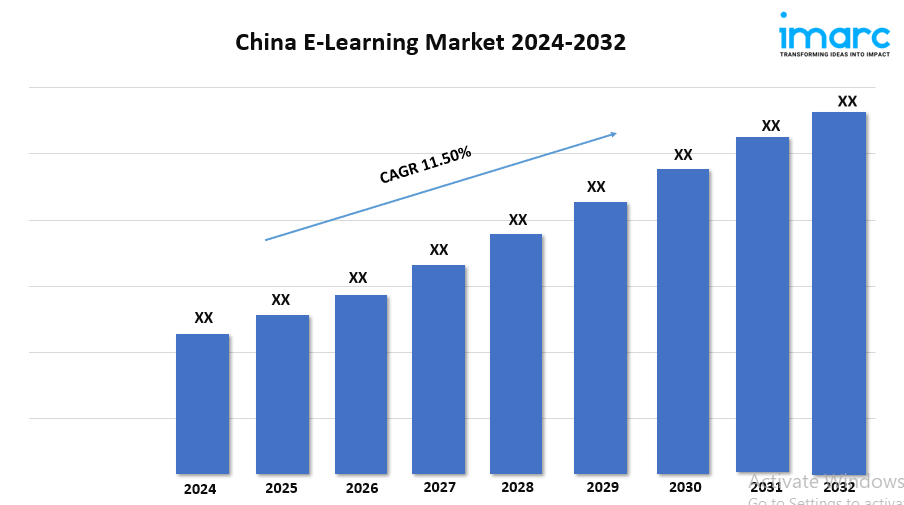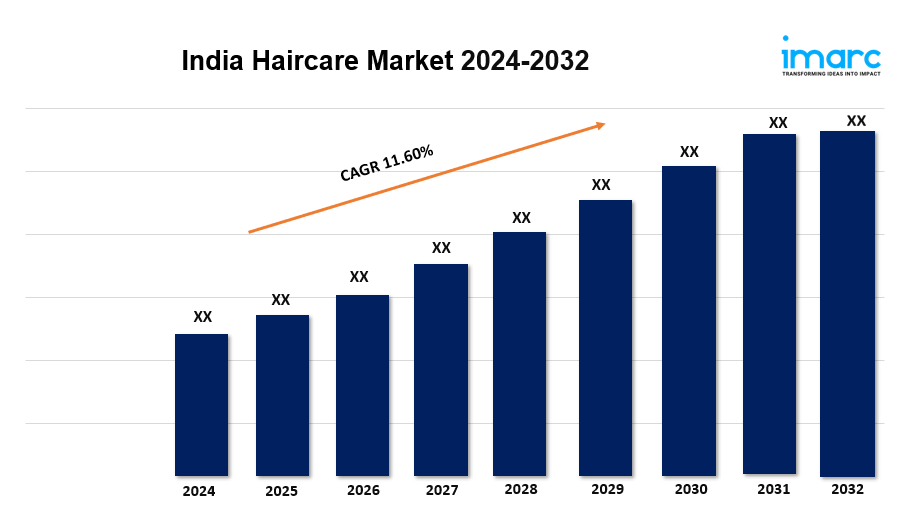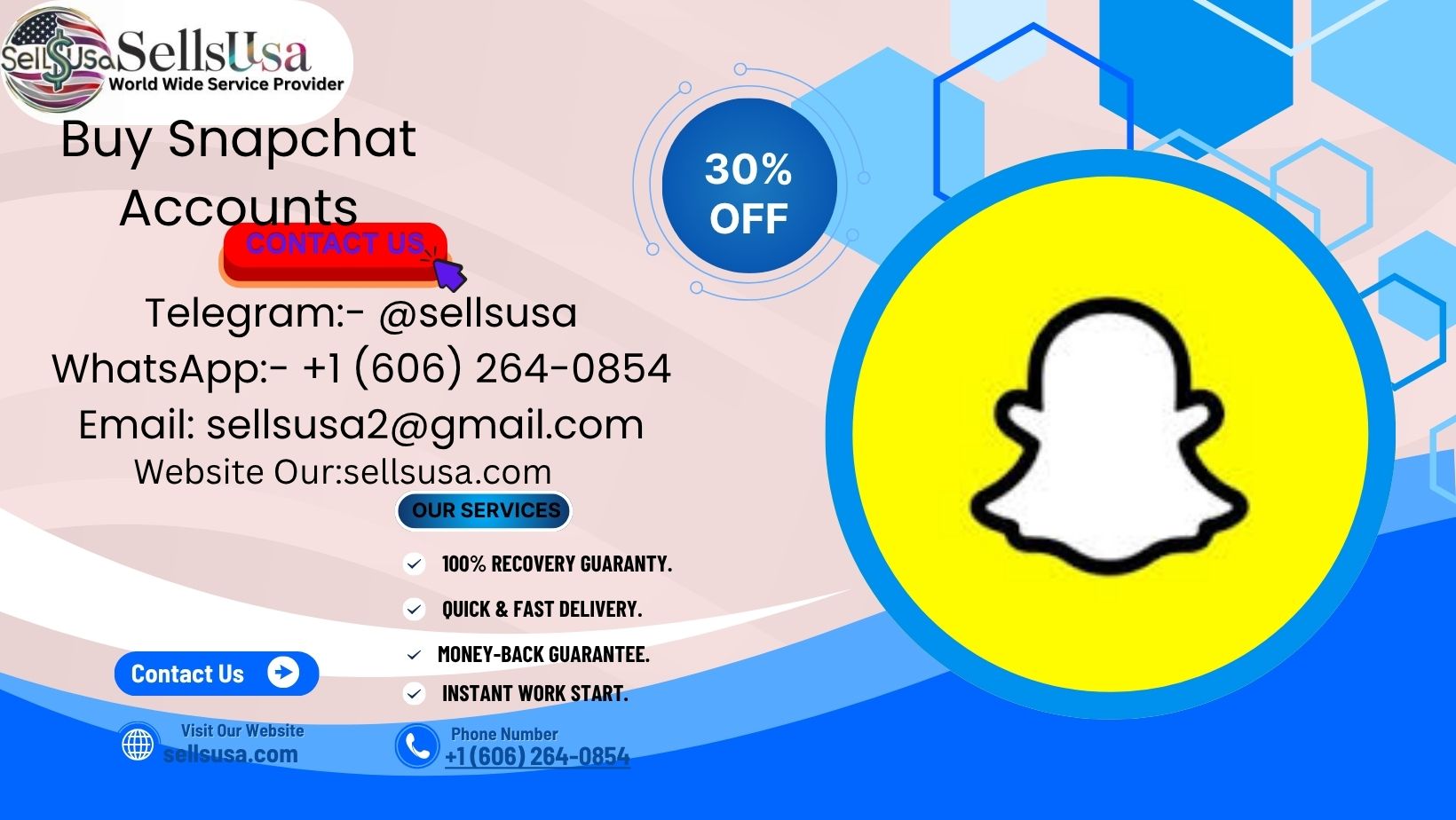Understanding your competitors is essential if you want to stay ahead. This means getting a nuanced perspective of their strengths and weaknesses—and understanding how your target audience perceives them. Competitive market research is the key to achieving this. It helps you better understand your top competitors and monitor market trends to refine your strategy based on data.
Social Listening serves as a powerful competitive analysis tool, extracting targeted brand insights from widespread online conversations across social networks. With Social listening competitive analysis, you get real-time information about how consumers act, new trends and competitors' activities, which you can use to quickly pivot strategies and stay ahead of the game.
Let’s dive deeper into how social listening for competitive analysis gives you an edge.
The benefits of using social listening for competitive analysis
Social Listening gives you real-world insights extracted from online chatter for a birds'-eye view of the competitive landscape. These insights help you refine marketing strategies to optimize your return on investment (ROI) and innovate across your business.
It's no surprise that 13% of social media leaders have prioritized Social Listening in 2025, with 12% of budgets allocated to it. If your competitors are gaining a competitive edge by investing in this area, you risk being left behind by ignoring it.
Competitive research also gives you insight into macro-consumer trends such as the influence of elevated consumer prices on overall spending habits and brand preferences. Or, how to better target Gen Z, a demographic known for its high purchasing power and unique consumer behavior.
Competitive intelligence is especially critical in social media marketing because of the nature of social. As new platforms, features and trends emerge, social teams must keep competitive market research on their radar to make sure their brand remains relevant.
Social listening gives your social teams swift, comprehensive insights from across social networks, review sites and customer forums—at a fraction of the cost and time traditional research methods take. You’re able to more easily overcome flux in platform algorithms and face continuously evolving consumer behavior. You’re also better able to understand how your competitors are navigating these shifts and adapting their strategies to meet them.
Plus, you can analyze sentiment in thousands of brand conversations to address customer needs more productively and ensure the competition doesn’t affect your market share.
6 tips for social listening competitive analysis
Understanding your competitor’s social media strategy means you can use what’s working and avoid their mistakes. Here are six tips for using social listening in competitive analysis:
1. Monitor competitor sentiment
Since your audience often overlaps with that of your competitors, their customer feedback is highly relevant to you. A complaint or request that comes back often shows a common problem or need. This is an opportunity to show yourself as the best choice for that popular need.
Public sentiment about your competitors is readily available on social media, providing valuable insights into their strengths and weaknesses. By analyzing this data, you can refine your strategy to differentiate your brand and showcase its strengths.
For example, consumers often take to social media to discuss their favorite fast-food chains. A competitive analysis of comments in Reddit social listening data can show what consumers love and what they expect from their favorite restaurants.

Sprout's tools for competitive analysis make it easy to look at customer feedback like this from social media. This helps brands understand how their competitors are seen and how they can stand out.
2. Identify market gaps
Social media is a goldmine of useful and unfiltered brand information you otherwise wouldn't find. With customers frequently sharing pain points, praises, unmet needs and even ideas for new features, it’s like having private access to your competitors’ focus groups.
By listening closely, you can spot gaps in their or your offerings and use this information to fill the voids. Some feedback may suggest small quality-of-life improvements, while others could spark game-changing ideas for new products.
For example, Apple’s transition to USB-C ports. For years, iPhone users have wanted a universal charging solution like USB-C. Apple eventually responded to customer sentiment by introducing USB-C ports in the iPhone 15 lineup. This decision solved a long-standing customer problem, and showed a key lesson for those using social listening: If there's something most of your customer base wants, seize the opportunity and give it to them.
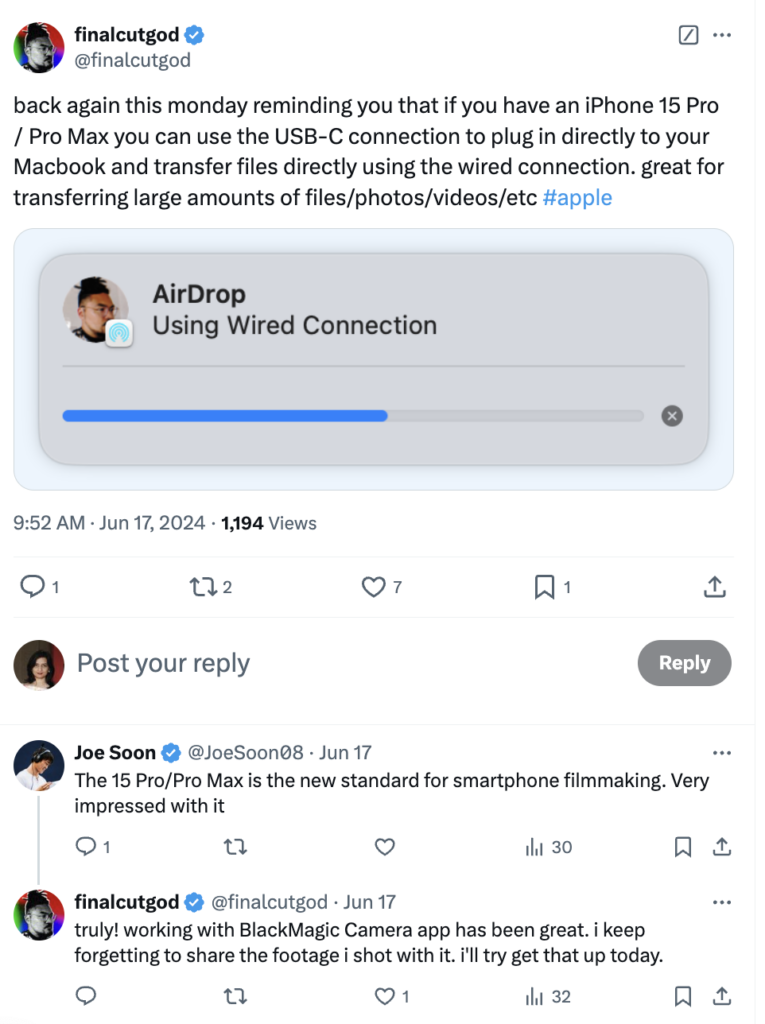
3. Refine content strategy
Analyzing content that resonates with your competitors’ audience reveals effective strategies in your industry. If certain topics, formats or channels drive significantly higher engagement among your shared audience, you can use this insight to tailor your content for greater impact.
For example, thermal drinkware Stanley, a brand that’s over 110 years old, spent most of that time marketing to men—specifically flasks for tradesmen and outdoor workers. However, after identifying a growing demand among women, and specifically the eco-conscious looking to reject single-use plastics, they revamped their content strategy to target this untapped audience. They used influencer marketing for their new Quencher tumbler on Tiktok, using female influencers to showcase the product.
The campaign went viral and lead to Stanley redefining its market presence.

4. Track industry trends
Staying on top of industry trends is vital to staying relevant and ahead of the competition. Social listening lets you track emerging topics, shifting consumer preferences and evolving market dynamics. By identifying and responding to trends proactively, you position your brand as a leader, and meet customer expectations in a rapidly changing landscape.
Nike recognized the growing consumer demand for environmentally responsible products as early as 2019. In response, it launched its 'Move to Zero' campaign, aiming for zero carbon emissions and zero waste across its operations. This initiative includes commitments to use 100% renewable energy by 2025 and to reduce carbon emissions across its global supply chain by 30% by 2030.

The campaign was so popular that many brands like The Good Plastic Company started following Nike's #movetozero campaign.
5. Measure customer satisfaction
Evaluating customer satisfaction levels for your competitors is a useful benchmark to improve your products and services. When you understand where competitors fall short, it helps you fill gaps and guide your improvements.
If customers repeatedly express frustration with a competitor’s customer service, chances are they care about your customer service, too.
For example, McDonald’s introduced the Grimace Shake as a limited-edition drink in the UK after its success in the US. The shake was a hit, and many took to social media to express their disappointment when it left the menu. In response, McDonald's decided to relaunch the Grimace Shake in the UK in December 2024 for a two-week period. Fans rejoiced, making it viral by sharing photos on social media.

By using social listening to measure customer satisfaction, you can proactively address pain points, refine your offerings and show customers that their opinions matter.
Sprout sentiment analysis tools enable you to evaluate customer satisfaction to identify which areas need improvement and which resonate most with your audience.
6. Benchmark performance
Using direct competitors as benchmarks helps identify growth opportunities and areas for improvement. Since you share a similar target audience, comparing performance reveals what’s working and what’s not.
Monitoring your competitor’s performance enhances this process by showing how you stack up on key metrics. For example, if a competitor is getting consistently high engagement on a particular network, it signals that your audience is active on that platform and you should try investing more in the space.
Ensure your strategies remain relevant in an ever-evolving competitive landscape by consistently assessing your performance. Sprout’s competitive analysis tools enable you to do just that. Track your performance against competitors through metrics like audience growth, engagement and sentiment across multiple platforms.
How to conduct social listening competitive analysis in 5 steps
Social listening goes beyond simply monitoring conversations—it’s about extracting actionable insights to get an edge over tough competition. A well-executed social listening competitive analysis provides the valuable data you need to refine your strategies, spot opportunities and strengthen your position in the market. Follow these five steps to make the most of your efforts:
Step 1: Define your goals
Before diving into social listening, take time to clearly outline what you want to achieve. Are you aiming to improve your social media engagement? Identify market gaps? Benchmark performance against competitors?
Setting specific, measurable goals will guide your social listening analysis, ensuring you focus on the conversations and metrics that align with your objectives.
Step 2: Identify your top competitors
Determine your main competitors. These may include brands who directly compete in your industry, those serving a similar audience or even brands you aspire to one day reach—though it’s important to keep your aspirations somewhat realistic for the sake of actionable analysis.
By selecting the most relevant competitors, the data and insights will be more relevant and actionable, and better positioned to help drive informed strategies.
Step 3: Use social listening to conduct in-depth research
Focus on tracking the metrics and conversations that align with your clearly defined goals. This could involve monitoring mentions of your competitors, analyzing product reviews or identifying common customer pain points to uncover valuable insights.
Sprout Social’s competitive analysis topic template streamlines this process by helping you track key metrics like share of voice, engagement and sentiment trends. With customizable templates and actionable visualizations, Sprout helps you identify emerging trends, top keywords and significant industry shifts, providing a deeper understanding of where competitors are excelling—and where they’re falling short.
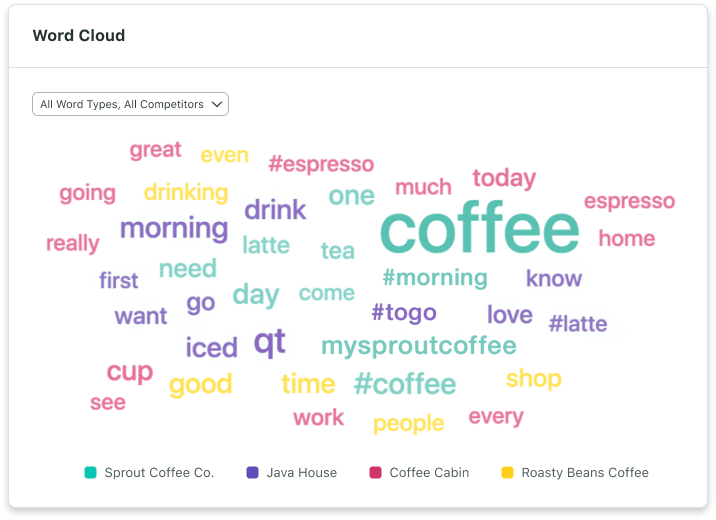
Step 4: Compare your product and marketing strategies
Use the insights gained from social listening to evaluate how your products and marketing efforts stack up against your competitors. Analyze key areas such as pricing, promotions and content strategies to identify what’s driving their success. Are there parts of their strategy that would resonate with your shared audience? Use this information to adapt your strategies.
To learn more about competitive product analysis.
Step 5: Evaluate your competitive position
With your social listening analysis complete, use the results to reflect on where your brand stands in the market. Set aside your bias towards your brand—acknowledging your weaknesses can be just as beneficial as recognizing your strengths.
Use these findings to refine your strategies, bolster your unique selling points and address areas for improvement. Regularly repeat this process to stay ahead of market trends and changing audience needs. Things can move fast.
How to use Sprout for social listening competitive analysis
Social listening data gives you a deep understanding of your business environment, extending beyond marketing to other key areas like product enhancement, spotting growth opportunities and improving customer care.
According to The State of Social Media Report, 95% of business executives agree companies must rely more heavily on social media data to inform business decisions across all areas of the business—not just marketing.
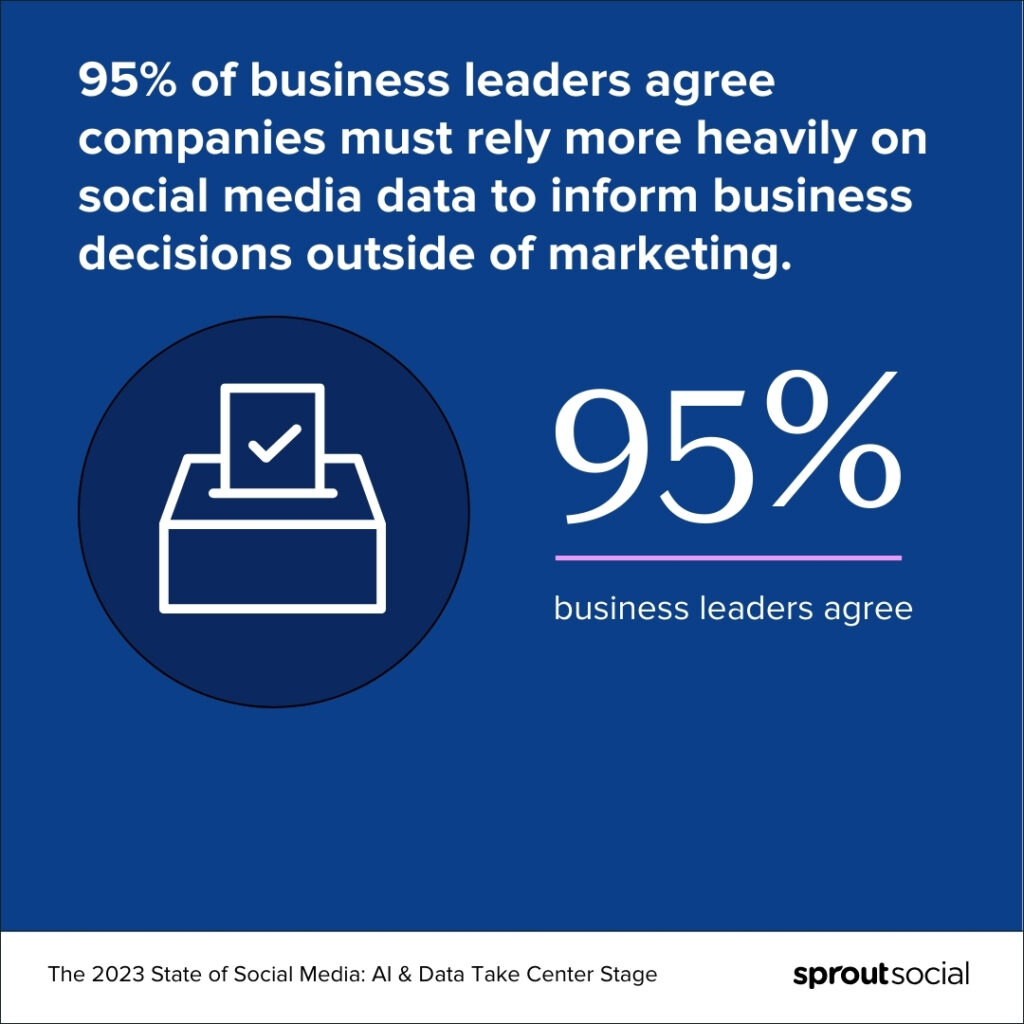
There’s a clear reason for this reliance on social media data. 81% of consumers say social has become their #1 channel for product discovery, according to a Q1 2024 Sprout Pulse Survey. They ask questions, share experiences and discuss product and service alternatives. This creates a wealth of customer-driven information waiting to be harnessed.
Social competitor analysis tools enable you to combine internal knowledge and social media intelligence, bridging the gap between how you think your audience perceives your brand and their actual sentiment. When these insights are paired with data from your CRM, product research and sales data, they give you an even clearer picture of how to grow market share.
Building materials pioneer James Hardie® uses social listening for competitive research. They engage in audience and trend analysis, research product sentiment, identify industry influencers and conduct competitor comparisons to build holistic brand strategies beyond marketing.
“Not only is it good from a brand health and marketing angle, it’s also important information we can pass on to our sales teams and product teams. We can find trends and common themes that come up in conversations. We can identify not only our own brand advocates but brand advocates for our competition,” says Bridget Kulla, Senior Digital Marketing Manager at James Hardie.
Here’s a quick look at how you can use Sprout for social listening competitive analysis.
Identify patterns and correlations
Look for patterns and overlaps between your internal knowledge and what social listening data reveals. Use Sprout to create presentation-ready reports that can help your team do competitor mapping to contextualize your research and competitive data. This process will help you identify competitors that weren’t even on your radar before, providing a more in-depth understanding of your market.
Integrate social listening in your workflows
Educate your team on the power of social listening and demonstrate how social insights can seamlessly plug into their workflows. For example, Sprout's Brand Keywords capability zeroes in on X conversations that are relevant to your brand and industry, including your competition. You can add keywords mentioning your company and products to surface even those conversations where you're not tagged directly.
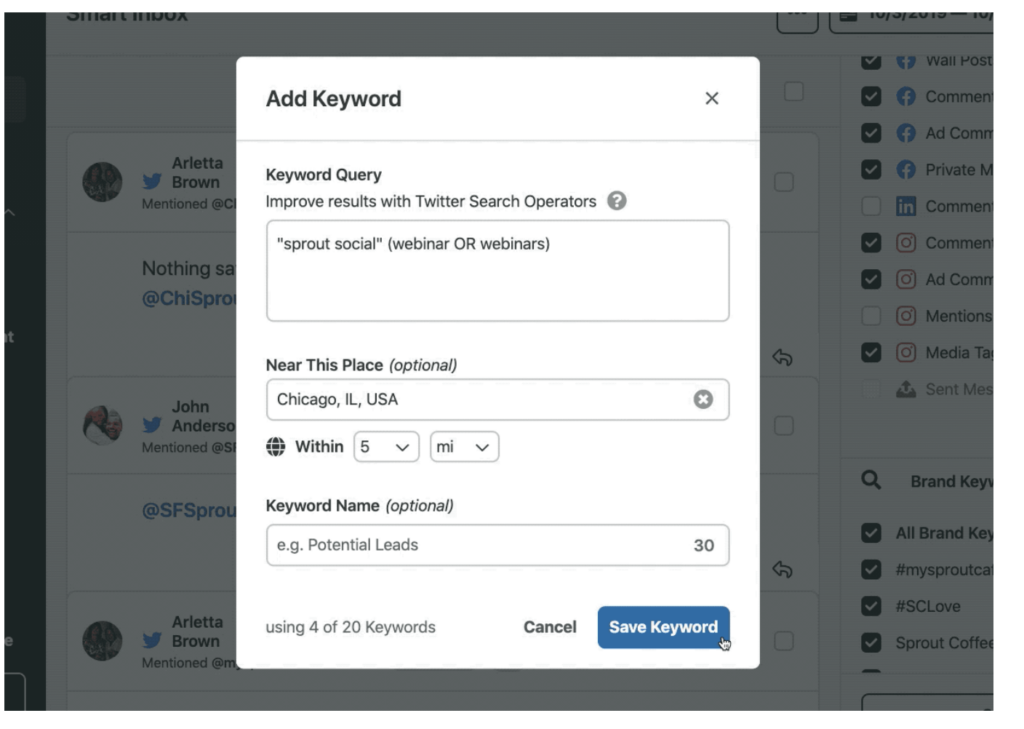
This gives you a direct view of chatter on X where consumers mention you in relation to a competitor. This also gives you an opportunity to join the conversation and recommend our brand.
Track listening data by topics
Marketing, sales and product teams each prioritize different aspects of the brand experience. To maximize the value of your social media listening, narrow your focus to topics and data that's truly relevant to your goals. This targeted approach lets you extract insights from thousands of social conversations without getting overwhelmed.
Sprout’s Listening solution enables this kind of detailed competitive research analysis with ease. Powered by Sprout’s Analyze by AI Assist capability, you can track critical metrics, hashtags, keywords, mentions trending in your Topics and even emojis. Get all these insights in the Conversation tab of your Listening Topics.
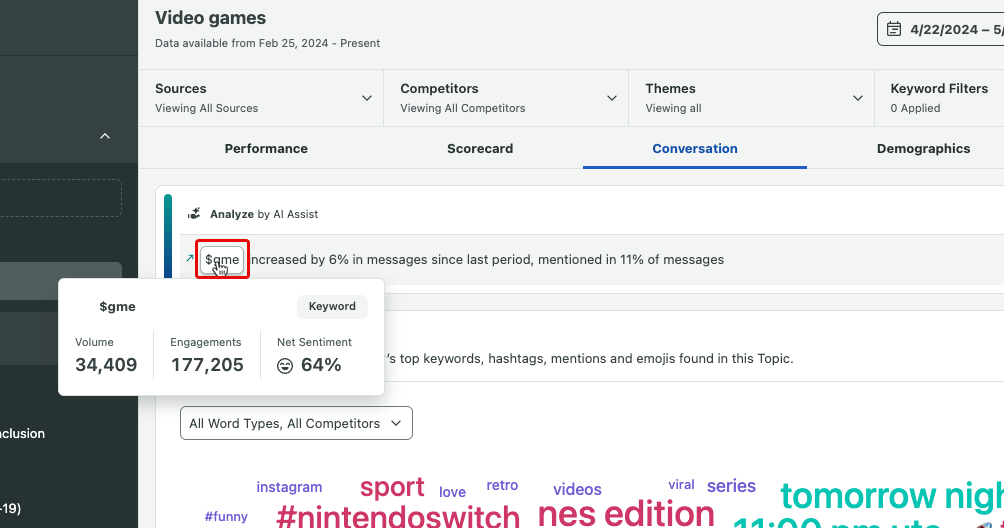
Further filter results to get more insights about the term.
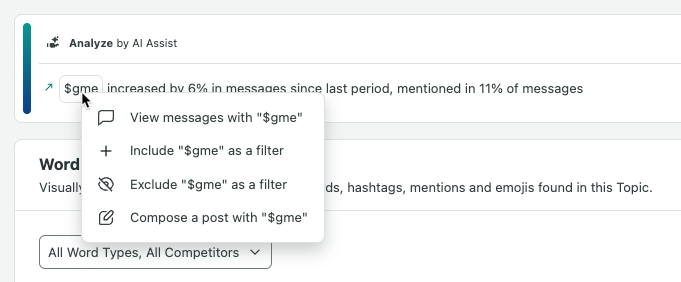
Our integrated, AI-driven Query Builder provides customization options for your listening, enabling you to include or exclude keywords. You can also create Topic Themes to further streamline your social listening data to find actionable insights.
